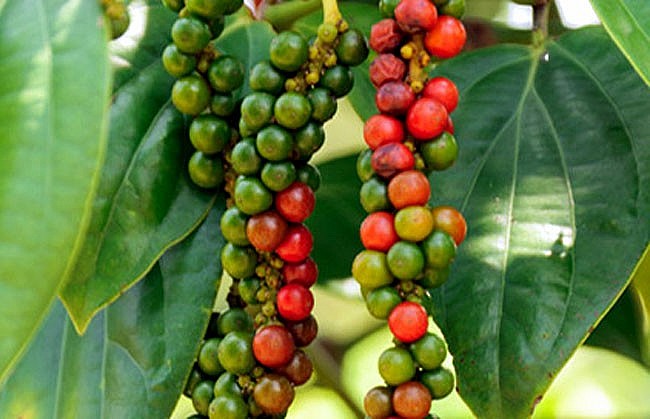According to data from the European Statistics Agency (Eurostat), in the first 4 months of the year, the EU imported 18.474 tons of pepper from the foreign market worth 83,7 million EUR, an increase of 22,9% in volume and 27% in pepper. % in value compared to the same period in 2023.

In April alone, the amount of pepper imported into the EU reached its highest level since the beginning of 4 until now, with 2023 tons, up 5.440% over the previous month and up nearly 22,7% over the same period. This is also the fourth consecutive month that EU pepper imports increased compared to the same period last year.
In the first 4 months of the year, the EU imported a total of 11.359 tons of pepper from Vietnam worth more than 48,5 million EUR, an increase of 25,1% in volume and 32,1% in value compared to the same period last year. With a volume of 11.359 tons, an increase of 25,1% over the same period last year and accounting for 61,5% of the region's total imports of this product, Vietnam continues to be the largest pepper supplier in the EU in 4 months. the begin of the year.
EU pepper imports from other markets also increased sharply over the same period last year such as: Brazil reached 3.443 tons, an increase of 25,3%; Indonesia reached 1.384 tons, an increase of 32,2%; India reached 952 tons, an increase of 9,9%.
The EU's average imported pepper price from Vietnam reached 4.273 EUR/ton, from Brazil it was 3.665 EUR/ton, Indonesia 5.509 EUR/ton, and India alone reached 6.646 USD/ton.
In addition to competitive prices, Vietnamese pepper export businesses have an advantage over some exporting countries such as India, Malaysia, Indonesia,... thanks to the EVFTA Agreement, which helps reduce import taxes on ground or crushed pepper. EU reduced from 4% to 0%.
According to the Center for Promotion of Imports from Developing Countries (CBI), Europe does not produce pepper, so the region's consumption mainly depends on imported supplies.
This agency also said that up to 95% of pepper imported into the EU is consumed in countries in the region and only 5% of that is re-exported to countries outside Europe.
Black pepper consumption in Europe is expected to grow steadily in the near future, with an expected increase of about 0,5% in 2023 and 1,8% in 2024.
CBI forecasts that pepper imports from European countries will grow by 1-2% each year. The European market offers a price advantage over Asian markets for high quality and sustainably produced black pepper.
Recently, the EU market's requirements and regulations on non-tariff barriers continue to increase and become increasingly strict. This market also continuously has warnings about pesticide residues as well as increasing the frequency of control and tightening MRLs regulations for food in general, including Vietnamese spices.
The Vietnam Pepper and Spice Association (VPSA) said that the EU is a potential market for Vietnamese pepper exports. However, to take advantage of these opportunities, the pepper industry must move towards sustainable production, because more and more European consumers are demanding certifications that ensure products are sustainable.
Sources: https://congthuong.vn/viet-nam-tiep-tuc-la-nguon-cung-ho-tieu-lon-nhat-tai-eu-327797.html